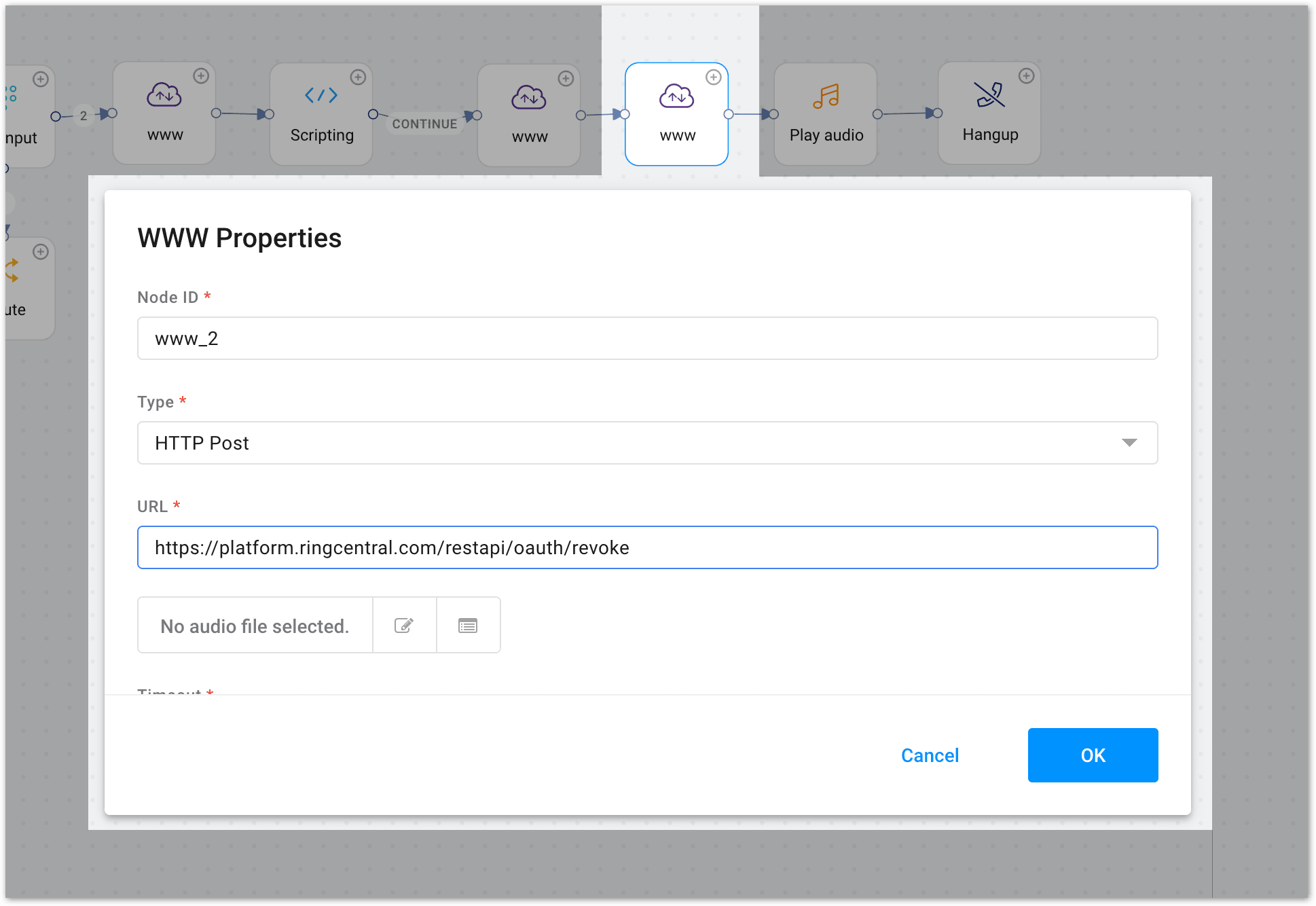
Engage Voice | Building an IVR to support call deflection
The case
- A Facebook page
- Facebook Messenger
- Apple Business Chat
- Google Business Messages
- SMS
Authorization through RingCentral RingEX
Goals
Plan
digital channel.
Lesson
Recommended reading
Preconditions
Actions
Step 1: Configuring the IVR node connections
Connect the Start node to the Get Input node.
the Route node.
the WWW node.
node to the WWW node.
Scripting node to WWW node.
second WWW node to the third WWW node.
WWW node to Play audio node.
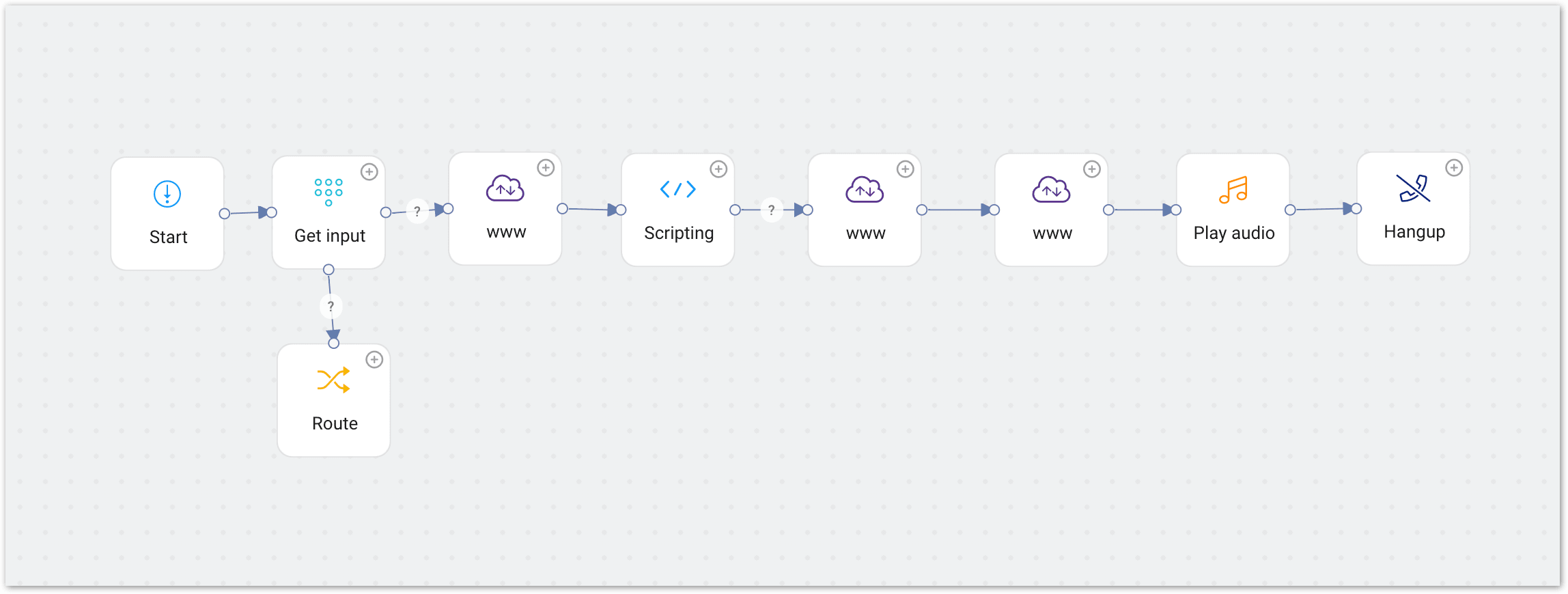
Step 2: Configuring a Get Input node to collect caller input
a. Specify Type as Exact Input.
b. Specify DTMF Input by clicking Add Input, and specify an input of 1. Repeat for 2.
Route node. This will open the connector arrow property settings so you can
perform the following:
a. Select 1 under Selection(s).
b. Click OK to close the modal window.
WWW node. This will open the connector arrow property settings so you can
perform the following:
a. Select 2 under Selection(s).
b. Click OK to close the modal window.
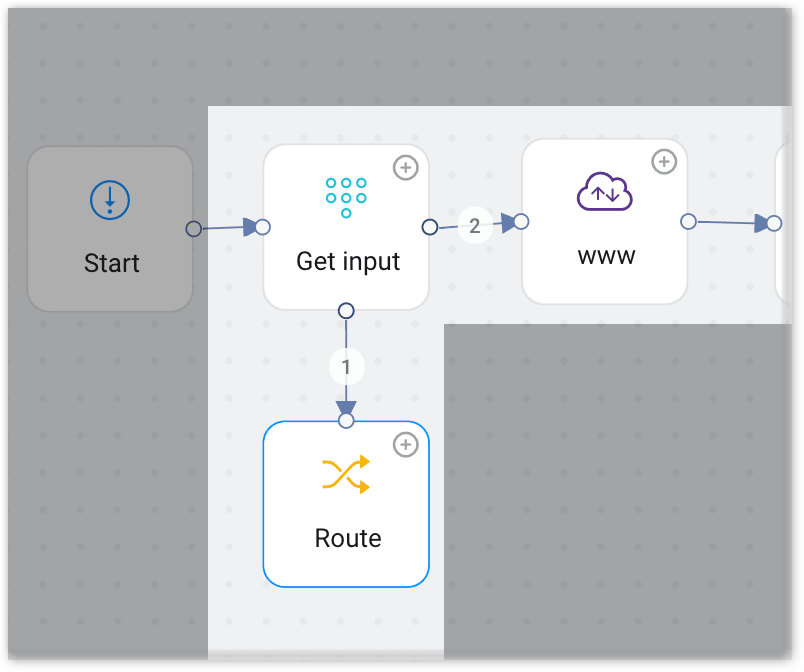
Step 3: Configuring a WWW node to connect to RingEX
a. Select the Type as HTTP Post.
b. Specify the URL as https://platform.ringcentral.com/restapi/oauth/token.
c. Specify a Format of Plain Text.
d. In the Body Content tab, enter body text in the form:
grant_type=password&username=%2Bnumber&password=password&extension=extension
For example:
grant_type=password&username=%2B16505551212&password=example&extension=9000
e. In the Custom HTTP Headers tab add the following headers:
i. Name: Content-Type
Type: Fixed Value
Mapping: application/x-www-form-urlencoded
ii. Name: Authorization
Type: Fixed Value
Mapping: Basic app-ID
f. Click OK to close the modal window.
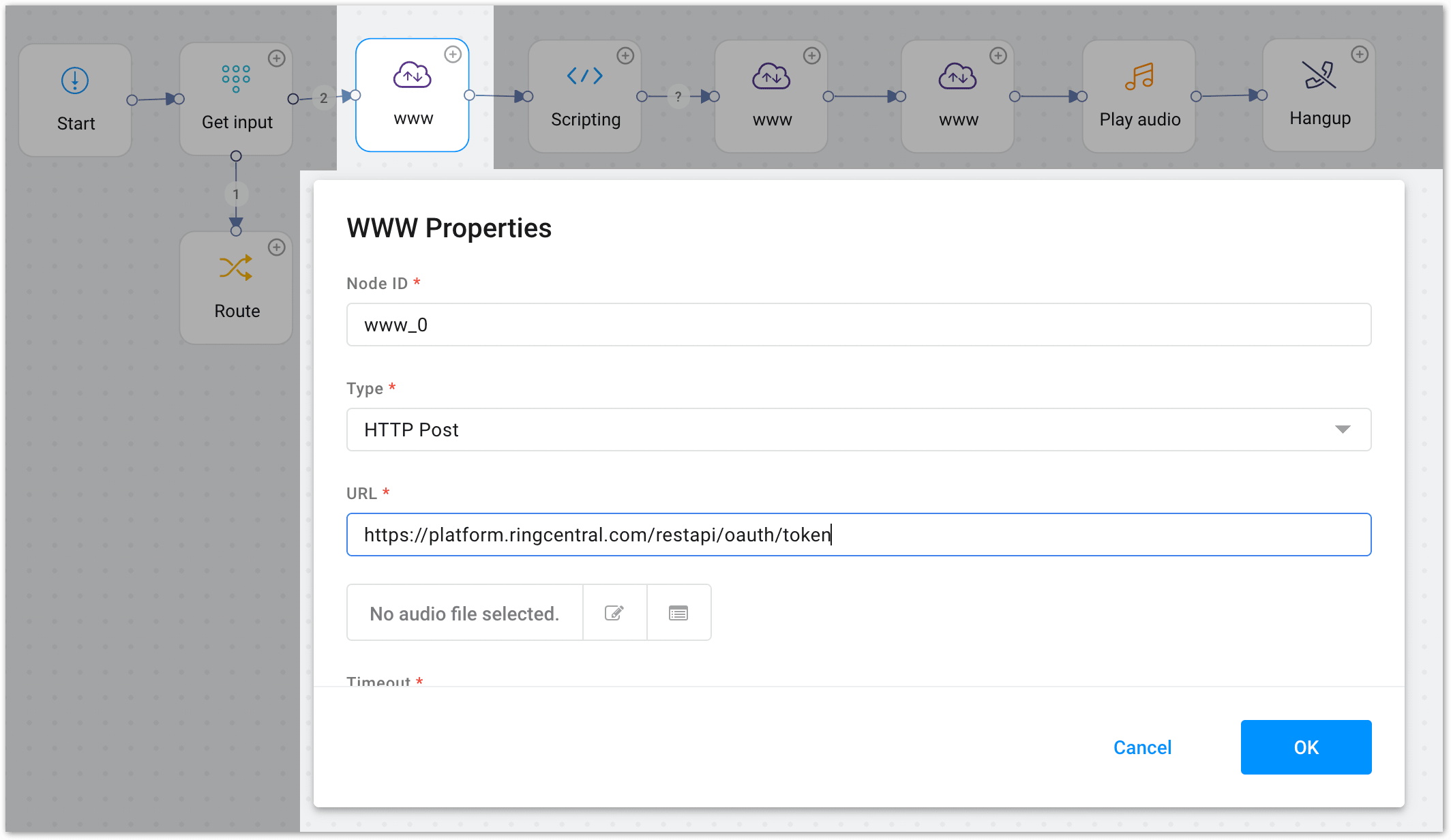
Step 4: Configuring a Scripting node to prepare the format of the SMS
a. Enter a name in the Node Id field (optional).
b. Enter code as desired. A sample script is below.
c. Click OK to close the modal window.
Sample script
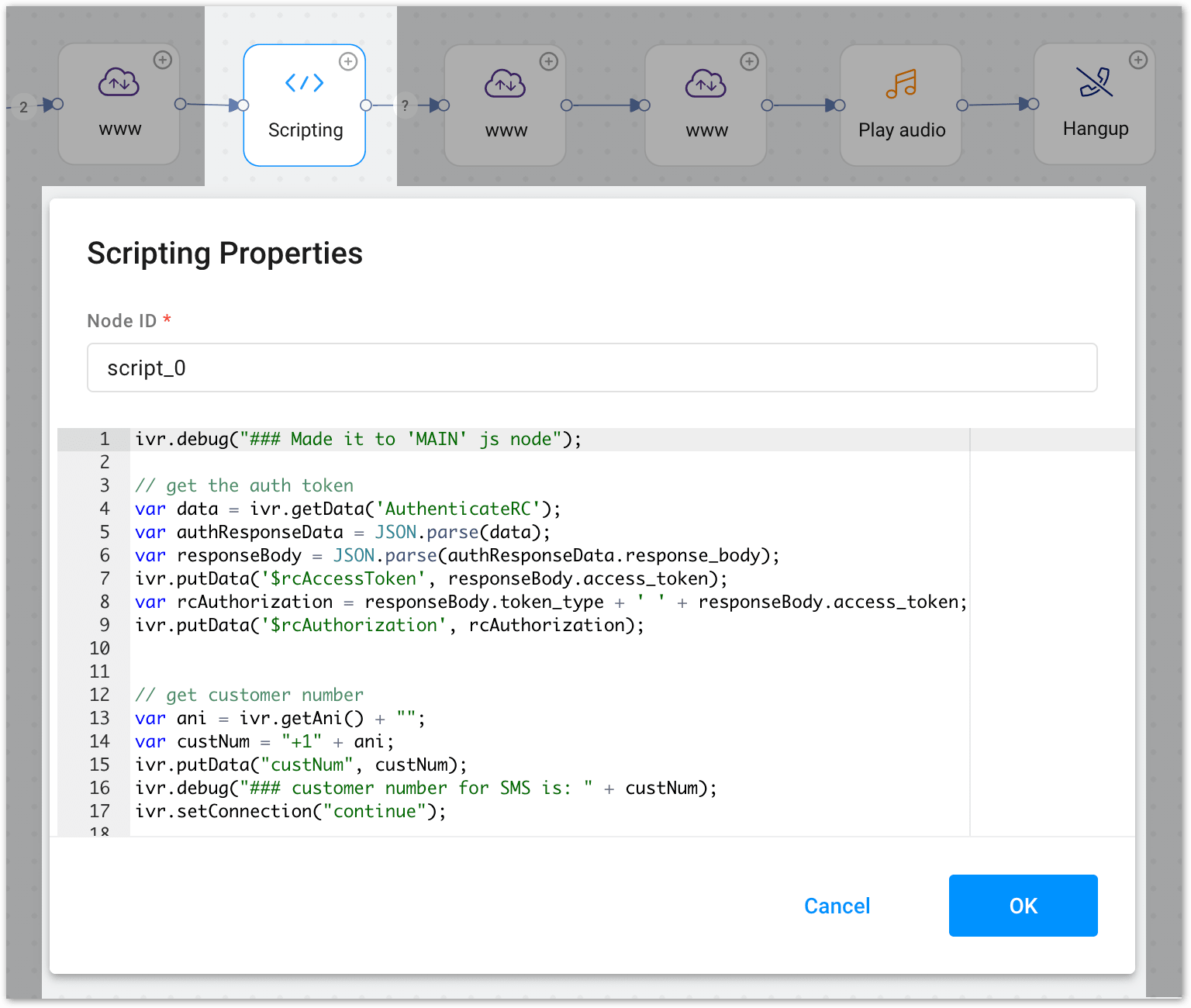
Step 5: Configuring a WWW node to send the SMS
a. Specify a Connection Id of continue.
b. Click OK to close the modal window.
a. Select the Type as HTTP Post.
b. Specify the URL as https://platform.ringcentral.com/restapi/v1.0/account/~/extension/~/sms.
c. Specify a Format of JSON.
d. In the Body Content tab, enter the JSON content needed for SMS.
For example:
{
"from": {"phoneNumber":"+16505551212"},
"to":[
{"phoneNumber":"$custNum"}
],
"text":"Thank you for contacting us. You can reply here to chat with us through SMS, or you can contact us through WhatsApp at https://wa.me/12345678901 or Apple Business Chat at https://bcrw.apple.com/urn:biz:9c231233-d943-482a-b913-7c625ba12345.”
}
e. In the Custom HTTP Headers tab add the following header:
i. Name: Authorization, Type: IVR Variable, Mapping: $rcAuthorization
f. Click OK to close the modal window.
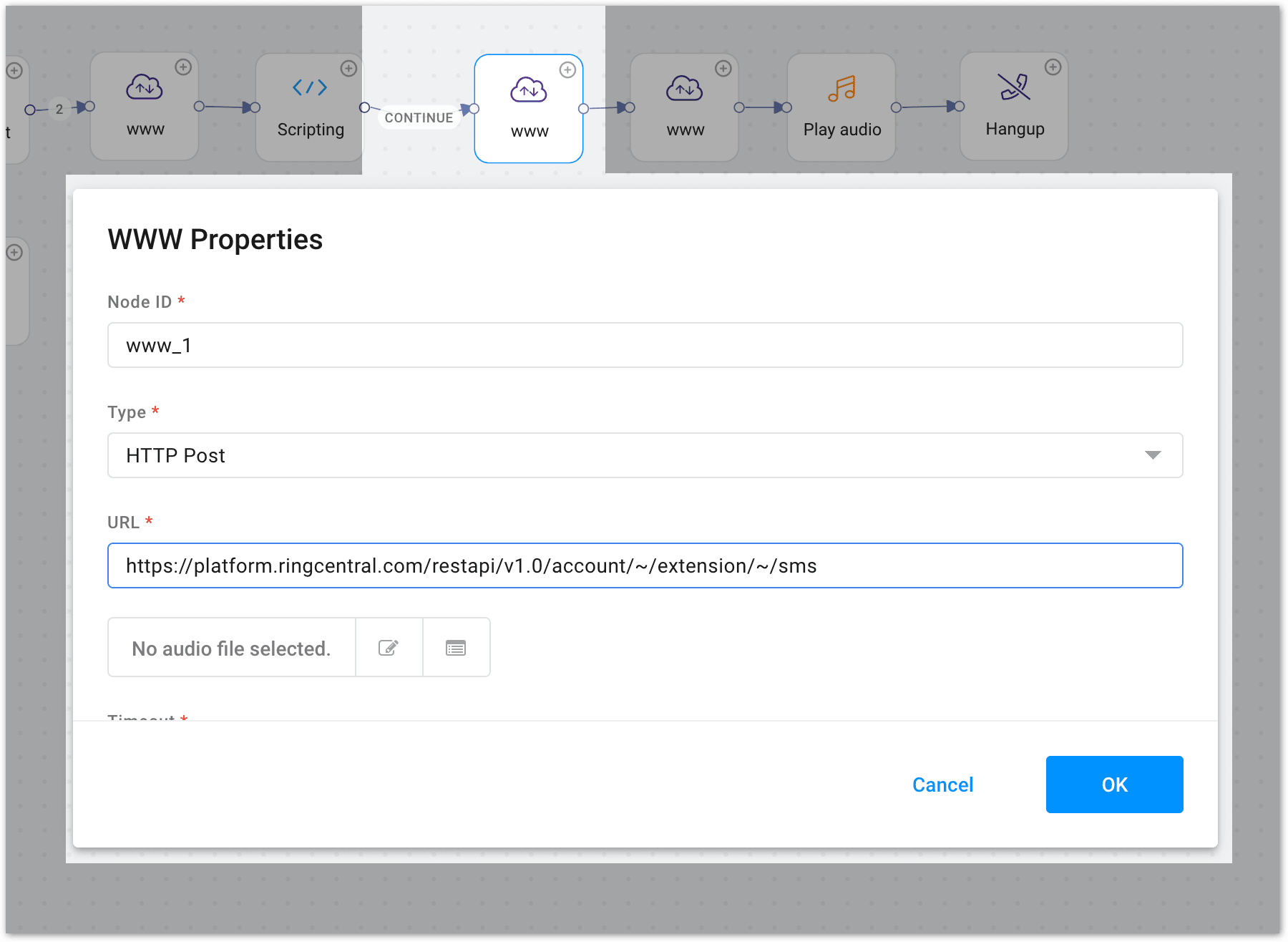
Helpful hint!
- A Facebook page: Log as admin to a page that you manage and capture the URL at top of page.
- Facebook Messenger: Open Messenger from your page, and copy the URL of the chat.
- WhatsApp: WhatsApp click to chat URL: https://wa.me/1XXXXXXXXXX. Requires a registered number.
- Apple Business Chat: The Apple Business Chat URL. Only works on Apple devices.
- Google Business Messages: Log into Google My Business and copy the URL from the home page.
Step 6: Disconnect from RingEX and wrap up the call
a. Select the Type as HTTP Post.
b. Specify the URL as https://platform.ringcentral.com/restapi/oauth/revoke.
c. Specify a Format of Plain Text.
d. In the Body Content tab, enter token=$rcAccessToken.
e. In the Custom HTTP Headers tab add the following headers:
i. Name: Content-Type, Type: Fixed Value, Mapping: application/x-www-
form-urlencoded
ii. Name: Authorization, Type: Fixed Value, Mapping: Basic app-ID
f. Click OK to close the modal window.
